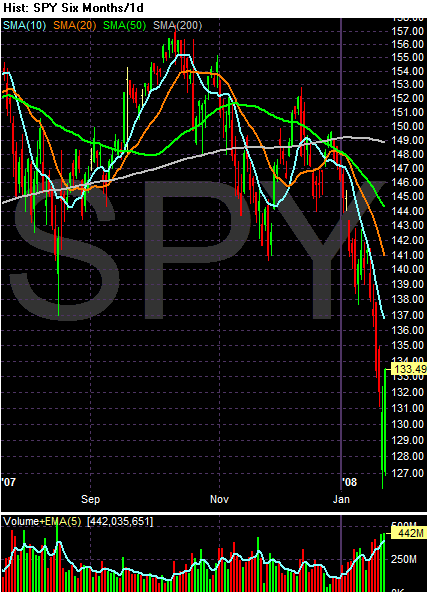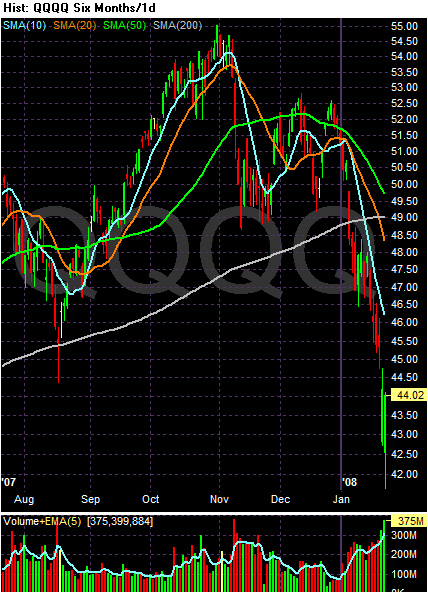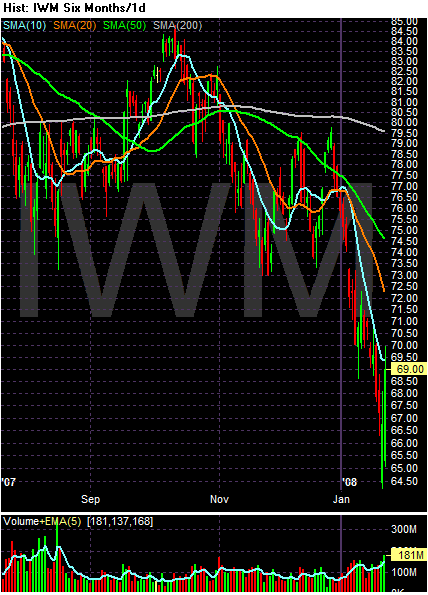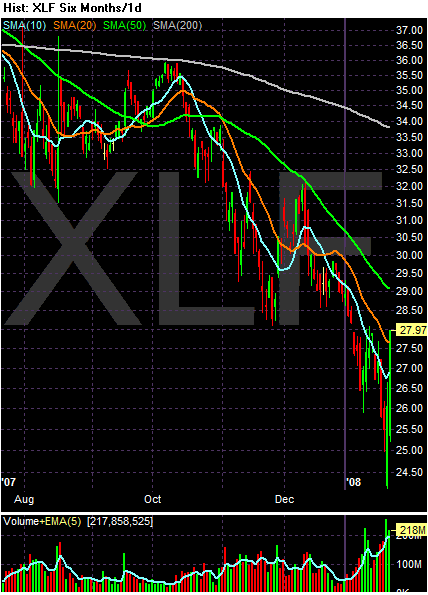Let's add some more details to that analysis. From today's WSJ:
The Dow's 631.86-point intraday swing was its biggest since July 2002, one of the low points of the last bear market. There have been just nine days with 500-plus point swings since 1995, many of which occurred at major market turning points.
Let's look at the daily chart of the indexes.

Notice on the SPYs the increasing volume on the sell-off culminating with the huge up bar on really heavy volume yesterday. However, also notice the chart still has a ton of very bearish elements -- the 10, 20 and 50 SMAs are all headed lower, the shorter SMAs are below the longer SMAs and prices are below the SMAs.

The exact same analysis for the SPYs applies to the QQQQs

The IWMs have the same analysis, with the caveat that volume totals are less impressive here. While volume has picked-up over the last few weeks, it hasn't been a mammoth increase.
Let's add one more chart to the mix.

Financials led the market lower starting in early October of last year. Yesterday we saw a huge rally on really heavy volume. Also note that prices moved through the 10 and 20 day SMAs on a really strong bar.
The rally was supercharged late in the day by news that insurance regulators met with major Wall Street firms to discuss ways to stabilize and potentially bail out big bond insurers. These insurers have taken a hit because of their exposure to securities tied to subprime mortgages. Their instability threatens the wider financial system because they insure tens of billions of dollars in bonds, many of them held by Wall Street firms.
Regarding the problems in the bond insurers, Herb Greenberg had the following letter on his blog from an MBIA critic:
Does a company deserve your highest Triple A rating whose stock price has declined 90%, has cut its dividend, is scrambling to raise capital, completed a partial financing at 14% interest (now trading at a 20% yield one week later), has incurred losses massively in excess of its promised zero-loss expectations wiping out more than half of book value, with Berkshire Hathaway as a new competitor, having lost access to its only liquidity facility, and having concealed material information from the marketplace? Can this possibly make sense?
Those are some incredibly damning facts. Actually, just one of those would be a damning fact, but together they illustrate the depths of the problems with the bond insurers and why a bail-out would probably make sense right now.
Personally, I still think the financials are in for an incredibly difficult year. Losses have been large this earnings season and loan loss provisions are increasing because of an increase in defaults. In addition, total losses from the sub-prime mess have been projected to be between $300-$500 billion, yet we have only seen about $100 billion in writedowns. Assuming the $300-$500 figure is accurate, then we're only 1/3 of the way through this mess.